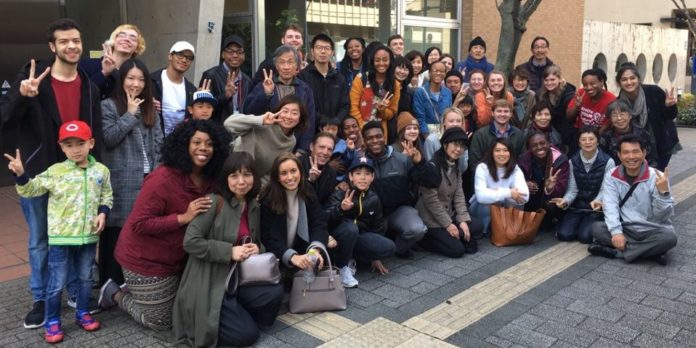MACON – A cohort of Mercer University students participated in March in a fully funded trip to Japan through the Kakehashi Project, a youth exchange program managed and hosted by the Japan International Cooperation Center.
These 23 students and Mercer’s Office of International Programs welcome the community to fold paper cranes on Monday, 11 a.m.-3 p.m., on Cruz Plaza as a token of appreciation to the Japanese government. In addition, 13 students from Mercer’s English Language Institute in Atlanta will assist with the event.
“This event is part of the action plan that the group of students developed at the culmination of the program to fulfill expectations that the students bring their learning home and share it with their community,” said Julie Strecker, director of international programs at Mercer. “We are grateful to the Japanese government for its generosity and hospitality in hosting this program and in choosing Mercer to participate.”
Paper cranes have a rich and deeply rooted significance in Japanese culture. Traditionally, the crane is believed to live for thousands of years and is a representation of long life and good fortune.
The Japanese refer to the crane as the “bird of happiness,” and it is believed that the wings of the crane carry souls up to paradise. There is a tradition that says that if one folds 1,000 paper cranes (or senbazuru in Japanese) one’s wish comes true.
Kakehashi Project participants want Mercer students and Macon residents to help them reach their goal of folding 1,000 paper cranes. They will offer lessons on folding the cranes, as well.
During the cohort’s time in Japan, it had the honor of visiting the Hiroshima Peace Memorial Park.
“It was truly an incredibly moving and formative experience that we will never forget,” said Mary Marudas, a senior who participated in the project.
While they were at the memorial, Mercer students visited the statue dedicated to Sadako Sasaki, who was exposed to radiation as a child when U.S. forces dropped an atomic bomb on Hiroshima on Aug. 6, 1945. Although Sadako survived the bomb itself, she was diagnosed with leukemia by the age of 12.
Sadako attempted to fold 1,000 paper cranes to wish for healing, but only folded 644 cranes before her death. Though she was unable to complete this task, her classmates continued to fold paper cranes in her honor, and she was buried with a wreath of 1000 paper cranes to honor her dream.
“I don’t think our students will ever look at an origami crane the way they did before visiting Japan. Many of them viewed it as a novelty before, and now it is a symbolic commitment to peace and shared humanity,” said Strecker.
“We would like to send a senbazuru from Mercer to the Hiroshima Peace Park with our wish in honor of the continued relationship between the U.S. and Japan, and to continue Sadako’s legacy as we work towards a more peaceful and harmonious world for all,” Marudas added.









